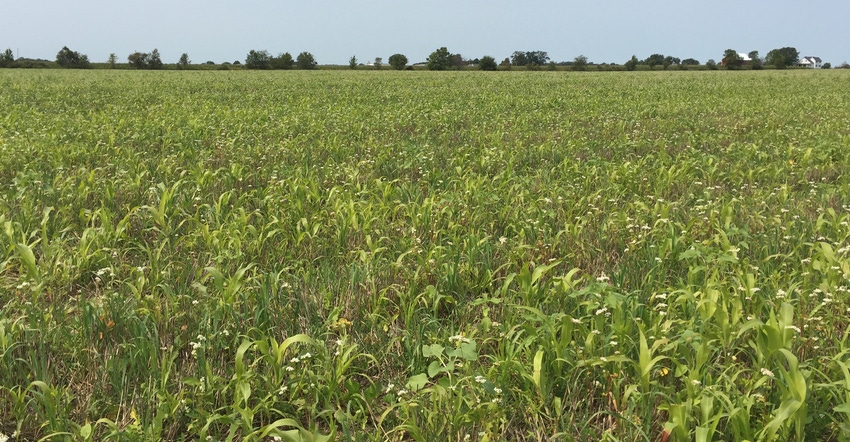
Recent articles on the Indiana Prairie Farmer website discussed the potential impacts of today’s much larger machinery creating deeper soil compaction. These articles, Why soil compaction is bigger yield threat today and Reduce soil compaction potential, caught the attention of Jim Moseley, a Master Farmer and former public servant, Clarks Hill, Ind. In 1989, Moseley served as agriculture adviser to the administrator of U.S. EPA. He served in other roles and was deputy secretary of USDA from 2001 to 2005.
Roots of soil compaction
Moseley believes soil compaction can be traced back to other causes, in addition to the heavier machinery used today. Here are excerpts from his letter to the editor:
“Something missed [in the articles] was that we had crop rotations until the mid-1970s. Then the world suddenly demanded corn and soy in volume. Until then, we gave the soil a chance to repair our corn and soy soil compaction with a ‘rest’ from the more extensive rooting of a small grain and/or perennial crops. That gave us a break in soil carbon oxidation losses from tillage.
“But when we went to all corn or a corn-soy rotation, which led to annual tillage, we accelerated that carbon loss with no ‘recovery’ period. Eventually, the losses became more than just linear. They accelerated geometrically as the soil lost critical microbial activity.
“When carbon losses mounted, we experienced increased soil compaction challenges, which affected root penetration and nutrient uptake. The response was heavier applications of N, P and K [nitrogen, phosphorus and potassium] to maintain ready availability in the ‘tillage zone.’ That’s when we began accelerated losses of N and P into our water systems.
“We were losing carbon, which holds soil biology together and keeps N and P in place. At the same time, we were increasingly introducing them to the system. This was particularly notable on farms where animal manure was applied from confinement buildings. I could apply enough N to grow a full crop of corn. However, the N-to-P ratio of manure added more P than could be held. I was guilty, too!
“Those that converted to no-till leveled that carbon loss fairly well. Those that continued to till, especially heavy fall tillage with a spring secondary pass, sustained the carbon, as well as biological loss. That came with a cost at a price point higher than Mother Nature can absorb. The soil is resilient — to a point. But we know that farmers can overwhelm that natural process and create problems for ourselves and others. We have done so.
“This is the rationale for cover cropping. No-till helps, and we can build back a very small amount of carbon annually if done well. However, it will take a very long time to get back to pre-1970 carbon levels. Cover crops accelerate that recovery, mainly through deeply placed carbon from root systems. Livestock mob grazing accelerates it more. Most farmers can’t manage livestock as it was once done, but they can implement a modest program of cover crops to help rebuild carbon.
“For simple long-term productivity of our soil resource, we need to do something more — ourselves, as farmers, alone — for ourselves and society.
“I’ve concluded government isn’t going to help lead it being done. Government will only respond fully when we have a soil carbon crisis. I think this will express itself fully in the next 20 years where farmers ignore the facts of biology.
“This may seem interesting coming from a person who spent much of his life working to get government more engaged in conservation, but it’s a reality which I have to live with now. I recognize my efforts were, at best, an even-keel attempt. We’ve not really moved the needle enough in government efforts to prevent a serious challenge in productivity [soon] from the best, naturally producing soils in the world. It’s not that we couldn’t, it’s just that we didn’t.
“Government can help some, but key leadership must come from farmers simply deciding to 'just fix it.'”
About the Author(s)
You May Also Like




